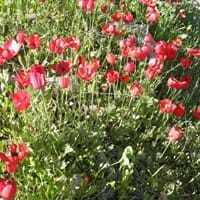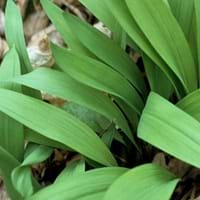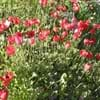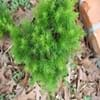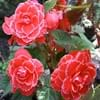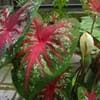Life Span
Perennial
Perennial
Type
Bulb or Corm or Tuber
Bulb or Corm or Tuber
Origin
Southern Europe, Mediterranean
World/Pandemic, North America, Europe, Northern Europe, Russia/Siberia, Northern Africa, Asia, India
Types
Not Available
Allium tricoccum burdickii, Allium tricoccum tricoccum
Habitat
damp meadows, Dry areas, Woodland edges
Cultivated Beds, Woodland Garden Dappled Shade
USDA Hardiness Zone
8-12
4-9
Habit
Upright/Erect
Clump-Forming
Flower Color
White, Red, Blue, Pink
Gold
Flower Color Modifier
Bicolor
Bicolor
Fruit Color
Not Available
Yellow green
Leaf Color in Spring
Green
Light Green
Leaf Color in Summer
Light Green
Light Green
Leaf Color in Fall
Several shades of Green
Several shades of Green
Leaf Color in Winter
Light Green
Light Green
Leaf Shape
Lobed
Lanceolate
Plant Season
Spring, Winter
Summer
Sunlight
Full Sun, Partial Sun, Partial shade
Full Sun, Partial Sun
Type of Soil
Loam, Sand
Loam, Sand
The pH of Soil
Acidic, Neutral, Alkaline
Neutral
Soil Drainage
Well drained
Well drained
Bloom Time
Early Spring, Spring, Late Winter, Indeterminate
Spring, Late Spring, Early Summer, Summer, Late Summer, Early Fall
Tolerances
Drought
Drought, Dry Conditions, Shade areas
Where to Plant?
Ground, Pot
Container
How to Plant?
Seedlings, Tuber propagation
Divison, Seedlings
Plant Maintenance
Medium
Medium
Watering Requirements
Medium
Average Water Needs
In Summer
Lots of watering
Lots of watering
In Spring
Moderate
Moderate
In Winter
Average Water
Average Water
Soil pH
Acidic, Neutral, Alkaline
Neutral
Soil Type
Loam, Sand
Loam, Sand
Soil Drainage Capacity
Well drained
Well drained
Sun Exposure
Full Sun, Partial Sun, Partial shade
Full Sun, Partial Sun
Pruning
Remove damaged leaves, Remove dead branches, Remove dead leaves
Remove damaged leaves, Remove dead branches, Remove dead leaves
Fertilizers
All-Purpose Liquid Fertilizer
All-Purpose Liquid Fertilizer
Pests and Diseases
Cutworms
Leaf spot
Plant Tolerance
Drought
Drought, Dry Conditions, Shade areas
Flower Petal Number
Single, Double, Semi-Double
Single
Fragrant Flower
No
Not Available
Fragrant Fruit
No
Not Available
Fragrant Leaf
No
Not Available
Fragrant Bark/Stem
No
Yes
Foliage Texture
Fine
Medium
Foliage Sheen
Matte
Matte
Attracts
Butterflies, Hummingbirds, pollinators
Bees
Allergy
Not Available
Not Available
Aesthetic Uses
Borders, Cottage Garden
Cottage Garden
Beauty Benefits
Not Available
Good for skin
Environmental Uses
Air purification
Insect Repellent
Medicinal Uses
Antitumor, Cramps
Emetic, Vitamin A, Vitamin C
Part of Plant Used
Flowers, Leaves
Bark, Bulbs, Flowers, Leaves, Root
Other Uses
Unknown
Used as a nutritious food item, Used as insect repellent
Used As Indoor Plant
No
No
Used As Outdoor Plant
Yes
Yes
Garden Design
Bedding Plant, Container, Cutflower, Mixed Border, Rock Garden / Wall
Not Available
Botanical Name
ANEMONE coronaria
ALLIUM tricoccum
Common Name
Crown Windflower, Lilies-of-the-Field, Poppy-flowered Anemone, wind flower
Ramps, Wild Leek, Wild Garlic
In Hindi
Poppy Flowered Anemone
रैंप
In German
Kronen-Anemone
Rampen
In French
Anémone couronnée
rampes
In Spanish
Poppy flowered Anemone
rampas
In Greek
Poppy Flowered Anemone
ράμπες
In Portuguese
Poppy Flowered Anemone
rampas
In Polish
Zawilec wieńcowy
pochylnie
In Latin
Poppy Flowered Anemone
aggerem
Phylum
Anthophyta
Magnoliophyta
Class
Equisetopsida
Liliopsida
Order
Ranunculales
Liliales
Family
Ranunculaceae
Liliaceae
Clade
Angiosperms, Eudicots
Angiosperms, Monocots
Tribe
Not Available
Allieae
Subfamily
Not Available
Allioideae
Importance of Poppy Flowered Anemone and Ramps
Want to have the most appropriate plant for your garden? You might want to know the importance of Poppy Flowered Anemone and Ramps. Basically, these two plants vary in many aspects. Compare Poppy Flowered Anemone and Ramps as they differ in many characteristics such as their life, care, benefits, facts, etc. Every gardener must at least have the slightest clue about the plants he wants to plant in his garden. Compare their benefits, which differ in many ways like facts and uses. The medicinal use of Poppy Flowered Anemone is Antitumor and Cramps whereas of Ramps is Emetic, Vitamin A and Vitamin C. Poppy Flowered Anemone has beauty benefits as follows: Not Available while Ramps has beauty benefits as follows: Not Available.
Compare Facts of Poppy Flowered Anemone vs Ramps
How to choose the best garden plant for your garden depending upon its facts? Here garden plant comparison will help you to solve this query. Compare the facts of Poppy Flowered Anemone vs Ramps and know which one to choose. As garden plants have benefits and other uses, allergy is also a major drawback of plants for some people. Allergic reactions of Poppy Flowered Anemone are Not Available whereas of Ramps have Not Available respectively. Having a fruit bearing plant in your garden can be a plus point of your garden. Poppy Flowered Anemone has no showy fruits and Ramps has no showy fruits. Also Poppy Flowered Anemone is not flowering and Ramps is not flowering . You can compare Poppy Flowered Anemone and Ramps facts and facts of other plants too.
